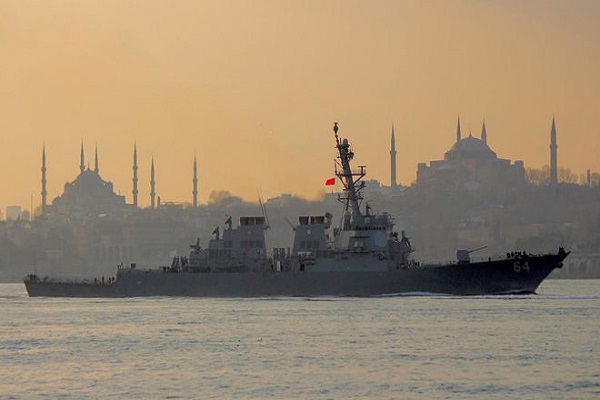
Istanbul: The Turkish government today
unveiled the route of its planned new canal for Istanbul, a
hugely ambitious 45 kilometre (28 mile) project designed to be
its answer to the famed artificial shipping lanes in Panama or
Egypt's Suez.
The project, first announced by President Recep Tayyip
Erdogan while he was prime minister in 2011, is by far the
most complex of a string of new ventures for the city.

The government argues it will create attractive new
living areas and take pressure off the Bosphorus Strait that
splits the European and Asian sides of the city and is one of
the world's busiest shipping lanes.
Transport and Communications Minister Ahmet Arslan said
that the canal would begin in the Istanbul district of
Kucukcekmece on the Sea of Marmara, where there is already an
inland lake.
It will then head north towards the Sazlidere reservoir
before emerging into the Black Sea just north of Durusu.
"The aim is to reduce the risks that can arise from
vessels in the Bosphorus carrying dangerous materials," Arslan
told a televised news conference.

"Another aim is to create an urban transformation for our
citizens in this area... and also to increase the
attractiveness of Istanbul as a global metropolis."
Some environmentalists have warned the project risks
wrecking the maritime ecosystem and could also increase the
risk of earthquakes in an area of high seismic activity.
But Arslan insisted that all precautions had been taken,
saying the route had been chosen only after thorough
earthquake risk assessment and computer modelling studies were
undertaken.

Erdogan, whose rise to national political prominence
began while he served as mayor of Istanbul, is presiding over
a string of ambitious infrastructure projects in Turkey and
especially its largest city.
With Erdogan fondly dubbing the schemes his "crazy
projects", the last years have already seen the opening of
metro and road tunnels underneath the Bosphorus as well as a
third bridge across the waterway.
Construction of a massive new airport is meanwhile
proceeding, with the facility set to see its first flight land
in late February before opening officially in October.













